Aquariums
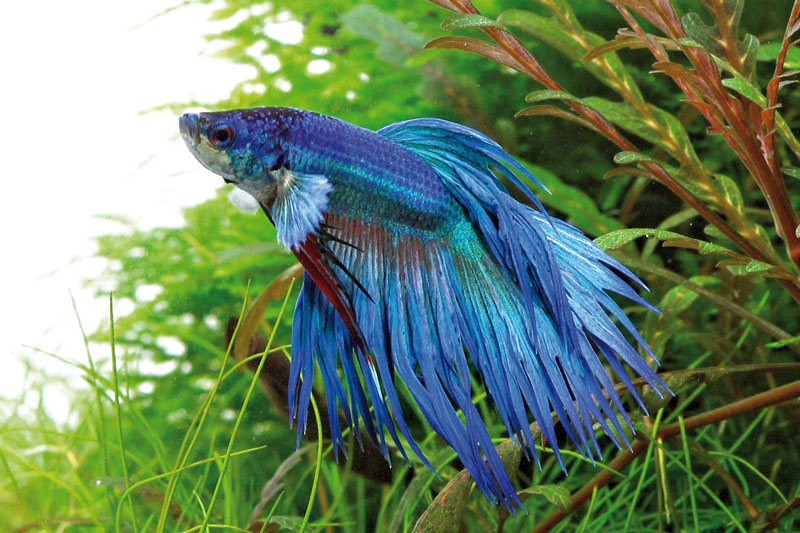
(Pictures Chris Lukhaup)
Betta splendens - Luminous "gemstones" in the aquarium
The genus Betta belongs in the system to the labyrinth fish and forms the most species-rich family of the so-called Osphronemidae with other genera. In addition to the gills, labyrinth fish also have the so-called labyrinth organ. With this organ the fish can take in atmospheric oxygen through air breathing. This is an adaptation to oxygen-poor bodies of water such as pools up to smaller water holes.
The genus Betta has over 70 species, with Betta splendens being the most well-kept species in the aquarium. The Siamese fighting fish has its main distribution area in Thailand. Here, this interesting fish lives mostly in rice fields and their ditches, in the swamp and flooded grass hollows.
For centuries the wild form in Thailand has been bred to an increasingly aggressive fighting spirit. Betta splendens is very territorial in its natural habitat, depending on the sexual mood. The males in particular - but also the females - can be very aggressive towards conspecifics of the same sex.
The natural form of the fighting fish is colored red brown with shiny green scaled herons and flag-like anus and dorsal fins. The wild form is only very rarely cared for by interested nature lovers in aquariums.
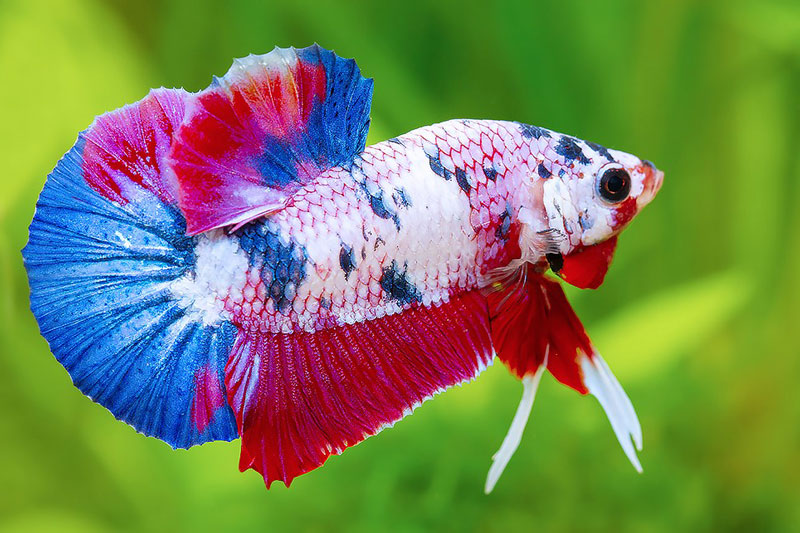
Today's cultivated forms with an incredible color palette and different fin shapes have contributed to great popularity around the world.
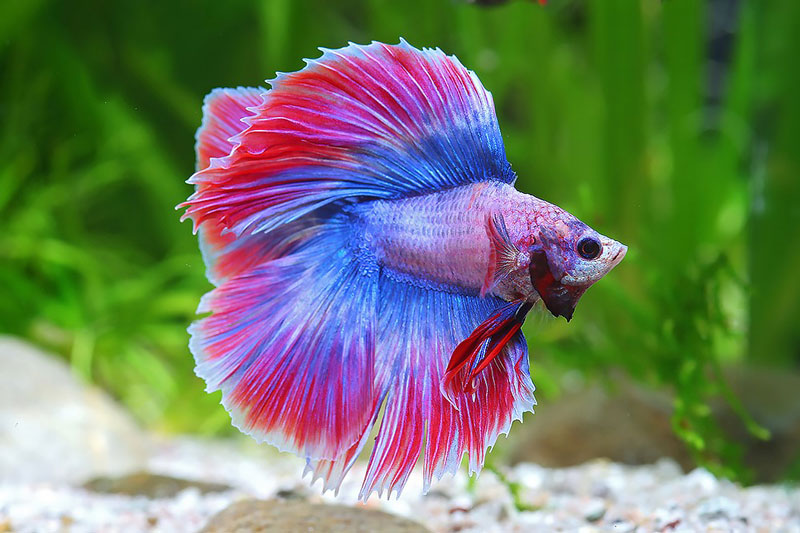
The Siamese fighting fish should always be kept alone in an aquarium. In nature, fighting fish men inhabit an area of approximately 30 to 50 cm. Therefore, aquariums of 30 - 60 liters are ideal for a Betta aquarium. In somewhat larger aquariums it is possible to keep several females, but you have to watch the ladies carefully to see whether a peaceful hierarchy is formed.
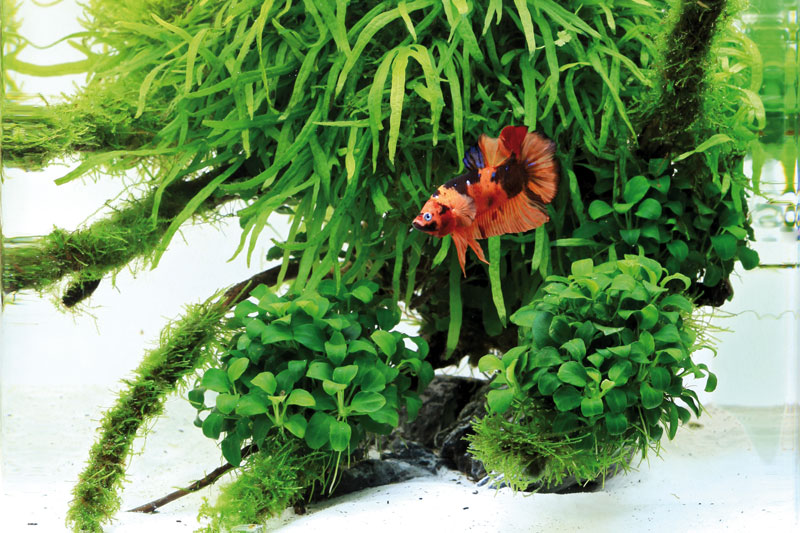
Bettas love herbaceous plants with lots of hiding spots and resting places. Of course, there should also be a free swimming area available so that the fish are not hindered in their freedom of movement.
Many stem plants such as Rotala sp. 'Green', Ludwigia palustris 'Super Red', or the beautiful Myriophyllum sp. 'Guayana'. Stems that reach the surface of the water and continue to grow in the water, along with floating plants such as Limnobium laevigatum and Phyllanthus fluitans, are ideal for shading. This shadow effect gives the Betta a little security from above.
The Ceratopteris cornuta and Ceratopteris thalitcroides are also well suited as herbaceous fern plants and are particularly good growing.
Many small species are suitable for the foreground, whether with a grass-like habitus such as Eleocharis pusilla or as ground-covering cushions such as Micranthemum tweediei 'Montecarlo'. As a rather slow-growing plant, Cryptocoryne species are always a good choice.
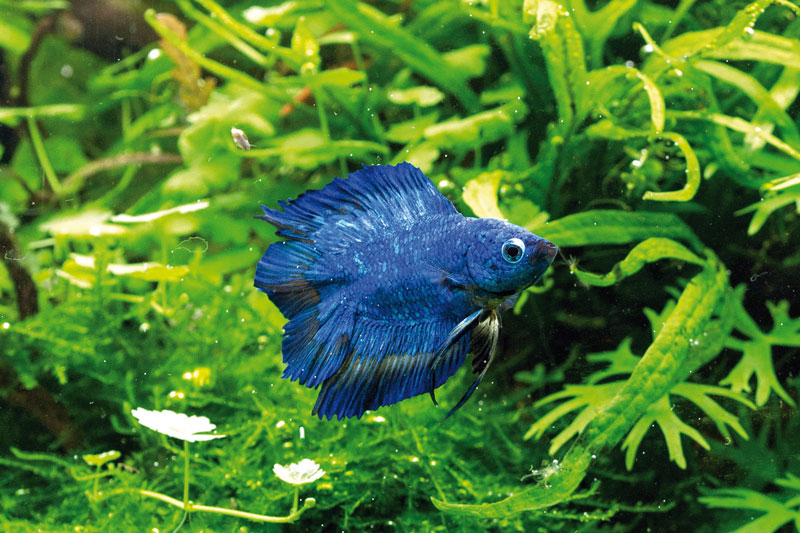
The substrate should be rather darker with rounded gravel or stones. The highly cultivated forms of the veil fight fish in particular have pronounced fins and could easily injure themselves on sharp-edged materials.
The water temperature should be at least 24 ° C - but 25 ° C to 26 ° C is better. Since labyrinth fish absorb the atmospheric oxygen, the outside temperature should not be too cold. A cover panel can help to achieve a higher temperature. Another important reason for the aquarium lid is to prevent the fish from jumping. As sedate as the Betta sometimes appears, the more agile they are, when they try to jump out.
A strong current must be avoided when filtering the water and the water surface should also be rather calm. A small internal filter with a throttled setting is completely sufficient.
A socialization with other aquarium inhabitants is a sensitive topic and is discussed in all directions with different experiences. Bettas are characters and it is difficult to make a general statement. With dwarf shrimp, one or the other betta may or may not be fine. Some develop into real prawn hunters, while others live well with the little "crawlers".
Smaller caves and retreats for the shrimp are definitely important - but young shrimp usually end up on the menu of every Betta.
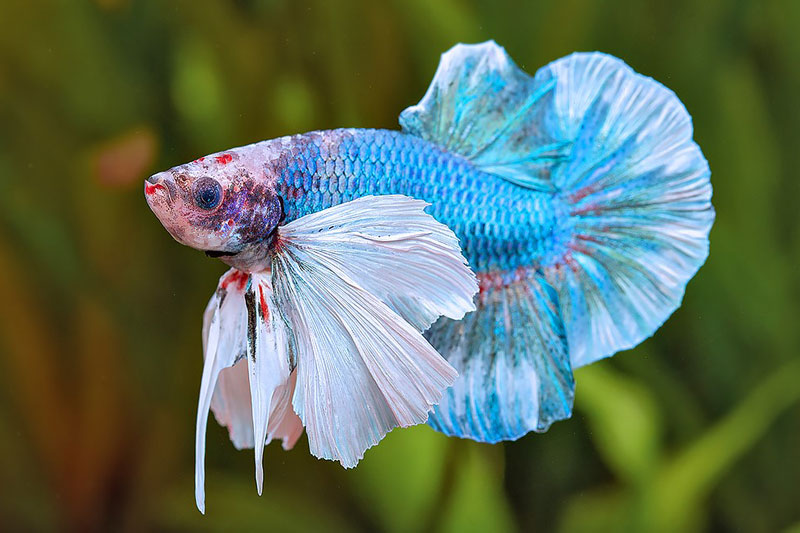
It may or may not work with snails as well. Soil snails like the tower snail are relatively safe. With racing snails (Nerite spec.) or horned Nerite (Clithon spec.) you should make sure that they are not permanently closed. If the stress factor is too big, you should move the snails into another aquarium. Bladder snails are very common victims of fighting fish and are literally pulled out of their shell!
Socialization with other fish is just as critical and should be carefully considered. Fish with agile swimming behavior and also with longer fins like guppies are mercilessly viewed as enemies and attacked. This leads to constant stress for both hunters and the hunted. Bottom fish such as smaller Ancistrus or Corydoras species may be suitable. It may or may not go well! Generally, therefore, the recommendation is to keep them individually.

Bettas are character fish!
It's hard to believe, but Bettas have a very distinctive character that can vary from fish to fish. Therefore, they are very popular and valued for children's aquariums. Bettas can be trained and a real bond is created between the owner and the pet fish. Especially when it comes to feeding, you can practice a few tricks such as swimming on your hand or targeted jumping out of the water.
Working with the mirror is also a change for the fish and should be used again and again in doses. Through the mirror image, the fish does not recognize itself but an intruder into its territory. The supposed enemy is threatened with widely spread fins. The raised fins also serve not to stick together when they are permanently closed. Any illnesses or injuries are easier to see when the fins are up. However, it should not degenerate into stress and should only be used for a short time.
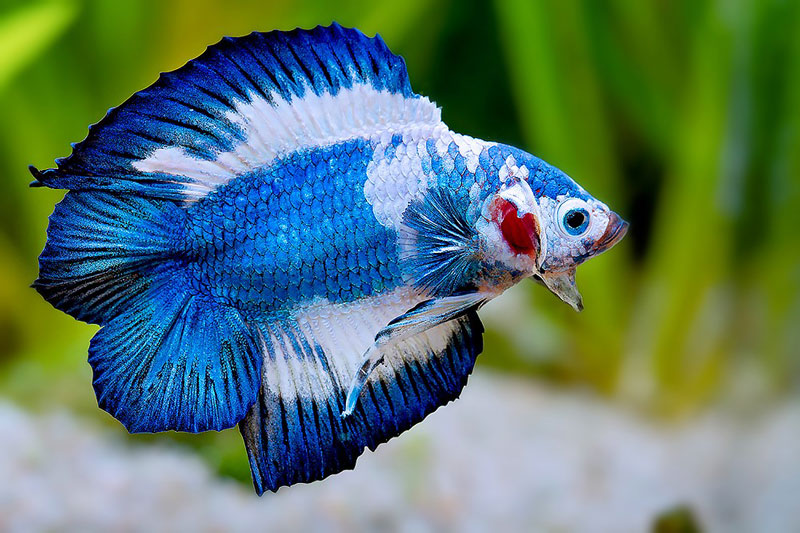
In nature, this behavior is more common due to confrontation with intruders than in domestic aquariums and is therefore nothing strange.